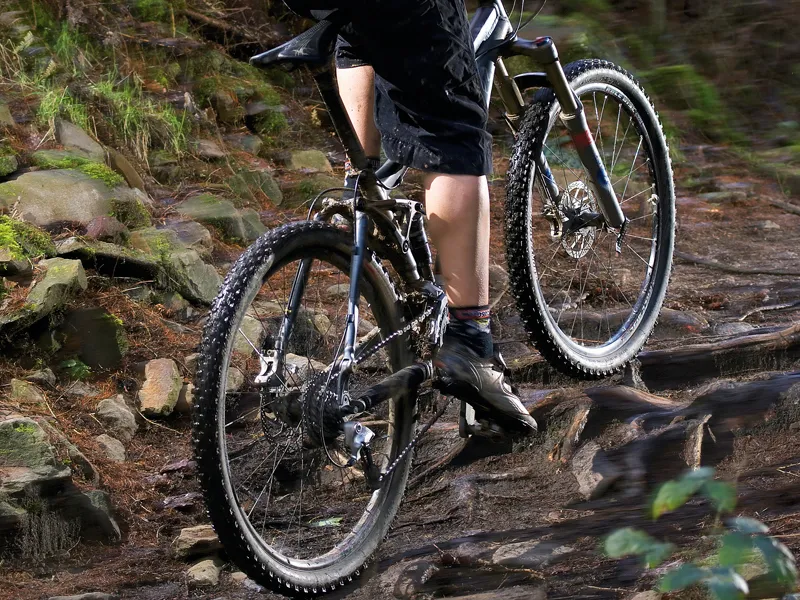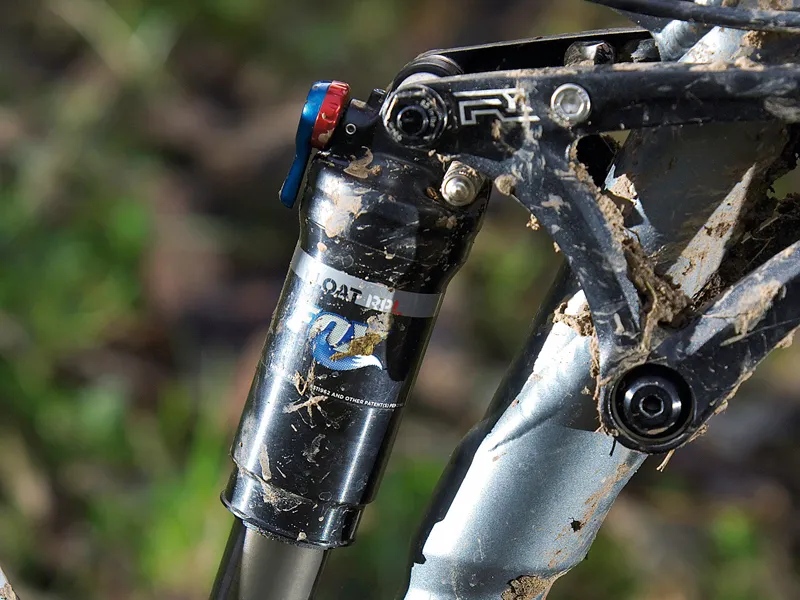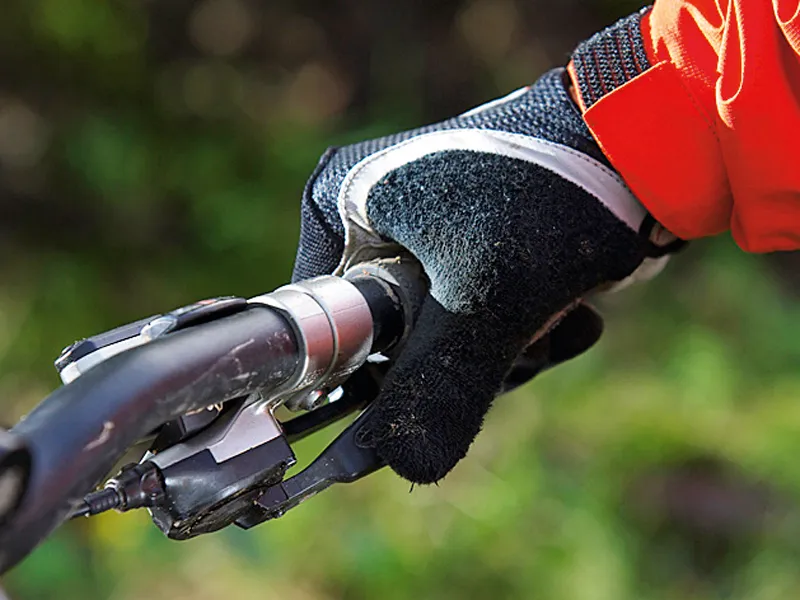Well-designed full suspension bikes give you a huge advantage over hardtail users: a rear wheel that's in contact with the ground nearly all the time. At almost any speed, this means one thing: more grip.
And more grip means, quite simply, more power. With the rear tyre digging in and driving even on rough trails, your effort at the pedalling coalface is more likely to result in forward progress. Here's how to make the most of it. >
Gear choice & your pedalling technique
Mountain bikes are remarkably efficient pieces of machinery, but with an engine - that's you - which bangs out a power output of perhaps half a horsepower at the very most, and a sweet running speed of 60-120rpm, they need a bit of help on the steep stuff. Full sussers have a big advantage over hardtails here, because the rear wheel will tend to keep tracking and gripping over obstacles in its path. That frees you up to keep the pressure on the pedals with less fear of spinning out and losing traction at a critical moment over roots or rocks. It can still happen of course (see the Tyre Choice section a little further on for more on this) but it's less of an issue than with an unsprung rear end.
To make the most of this free extra grip, select a slightly higher gear than you might normally use and concentrate on turning the pedals in smooth circles. Keeping the power delivery smooth takes some practice, but it's worth the effort. It'll be slightly harder work than a lower, high spinning gear, but you'll be amazed at the difference it can make on short, lumpy sections of climb. It can also be a help in slippery conditions because a smooth, slower pedalling speed reduces the torque on the rear wheel, and with it, the chance of losing grip and slipping off.
>Suspension setup
>Full suspension design has been given a kick from behind by the introduction of more sophisticated shock valving over the past five years or so. Long travel bikes can now be set up to pedal uphill without the dreaded pogostick bobbing motion. A little up-and-down bob doesn't affect forward motion as much as most people think, but it can be off-putting when you're busting a gut trying to get up a steep climb.
What you don't want to do, though, is to prevent the suspension from working at all in situations when it can help.
Firm compression damping - or even complete lockout, if you have it - on long, smooth drags can definitely be a help. But as the trail gets lumpier, you'll want to open the shock valving to allow the rear wheel to track up and over obstacles. Don't underestimate a long travel bike's ability to climb up and over large steps, roots and rocks that can leave a hardtail defeated.
There's an element of experiment and compromise here, but by toying with shock pressure and compression damping settings you should be able to arrive at a setup that works for you, not against you.
>Tyre choice & setup
>Power is nothing without grip, so choosing the right tyres and pumping it to a pressure that allows it to work properly is critical. In practice, tyre choice is a surprisingly personal thing, so there's no substitute for trying a few different combinations and seeing what works for you.
Wider profiles and deeper tread patterns translate into better grip at the expense of slower rolling, higher weight and greater mud-clogging. Narrower and shallower tyres cut through mud better, clog less and accelerate faster, but need to be run at higher pressures to fend off pinch punctures and don't grip as well in the dry. >If you're getting the feeling that it's all about compromise, you'd be right. And, just to add to the confusion, tyre pressure can make a surprising difference. Less means more grip at the expense of more punctures; more means faster rolling and fewer flats. And the right pressure (we usually run tyres at 40psi) varies according to rider weight and trail conditions. Confused? Don't be. See WMB65 for a selection of winter tyres or just consider buying some tyres if you ?nd yourself running out of grip, or puncture patches. >
Ride position
>Bicycles are unique in having a power source - er, that's you again - that's moveable. It's a huge advantage when you need an extra few percentage points of power, to keep the front wheel from wandering around on a steep climb, or to coax the rear wheel >over an awkward step. For long, steady climbs you'll get the most efficient power delivery by sitting a little forward on the saddle, keeping your arms relaxed and choosing a fairly spinny gear. When you need more power, a rearward shuffle on the saddle can help to bring powerful quad muscles into play - but remember you'll tire more quickly this way. >For even more power, stand out of the saddle - but try to keep your weight back so that the rear wheel can continue to grip. On slow, steep or slippery climbs, this forward/rearward shuffle can be a continuous process, helping to keep the bike driving forward by making sure the rear tyre is constantly gripping and rolling over obstacles.
Roots & rocks
>There's an unwritten law of mountain biking that says there'll always be a section of slippery roots or rocks on the most awkward part of an already tough climb. On the other hand, mountain biking without rocks and roots just wouldn't be mountain biking, so it makes sense to learn to deal with them.
The key is to be prepared, so get into the habit of scanning the trail a few yards up ahead for obstacles. The faster you're riding, the further ahead you need to be scanning. Having identified a potential problem area, you've then got a few seconds to decide what to do. For short sections of rocks or roots it's often best to carry as much speed as you can into the approach, hovering over the saddle with your weight rearward to keep the rear wheel gripping. Keep the power down as you ride through, letting the suspension do the work for you but staying alert in case your rear wheel loses grip. With a little luck and enough speed on the approach, you'll ride through most stumbling blocks this way. >
Smooth & consistent
>For longer sections or on steep climbs where you can't increase your speed, you'll have to pick your line through. Choose a gear that you can maintain through the whole section, because shifting once you're committed probably won't be an option. Keep your weight as far back as you can and concentrate on keeping the power delivery smooth and consistent. >If you feel the rear wheel starting to slide, shift your weight back and ease off the pedals a tad.
Why not try our full suss riding techniques next time you're out!



